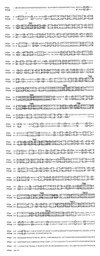Characterization of two patched receptors for the vertebrate hedgehog protein family
- PMID: 9811851
- PMCID: PMC24870
- DOI: 10.1073/pnas.95.23.13630
Characterization of two patched receptors for the vertebrate hedgehog protein family
Abstract
The multitransmembrane protein Patched (PTCH) is the receptor for Sonic Hedgehog (Shh), a secreted molecule implicated in the formation of embryonic structures and in tumorigenesis. Current models suggest that binding of Shh to PTCH prevents the normal inhibition of the seven-transmembrane-protein Smoothened (SMO) by PTCH. According to this model, the inhibition of SMO signaling is relieved after mutational inactivation of PTCH in the basal cell nevus syndrome. Recently, PTCH2, a molecule with sequence homology to PTCH, has been identified. To characterize both PTCH molecules with respect to the various Hedgehog proteins, we have isolated the human PTCH2 gene. Biochemical analysis of PTCH and PTCH2 shows that they both bind to all hedgehog family members with similar affinity and that they can form a complex with SMO. However, the expression patterns of PTCH and PTCH2 do not fully overlap. While PTCH is expressed throughout the mouse embryo, PTCH2 is found at high levels in the skin and in spermatocytes. Because Desert Hedgehog (Dhh) is expressed specifically in the testis and is required for germ cell development, it is likely that PTCH2 mediates its activity in vivo. Chromosomal localization of PTCH2 places it on chromosome 1p33-34, a region deleted in some germ cell tumors, raising the possibility that PTCH2 may be a tumor suppressor in Dhh target cells.
Figures




References
-
- Nusslein-Volhard C, Wieschaus E. Nature (London) 1980;287:795–801. - PubMed
-
- Perrimon N. Cell. 1995;80:517–520. - PubMed
-
- Hammerschmidt M, Brook A, McMahon A P. Trends Genet. 1997;13:14–21. - PubMed
-
- Echelard Y, Epstein D J, St. Jacques B, Shen L, Mohler J, McMahon J A, McMahon A P. Cell. 1993;75:1417–1430. - PubMed
-
- Riddle R D, Johnson R L, Laufer E, Tabin C. Cell. 1993;75:1401–1416. - PubMed
MeSH terms
Substances
Associated data
- Actions
LinkOut - more resources
Full Text Sources
Other Literature Sources
Molecular Biology Databases
Miscellaneous

